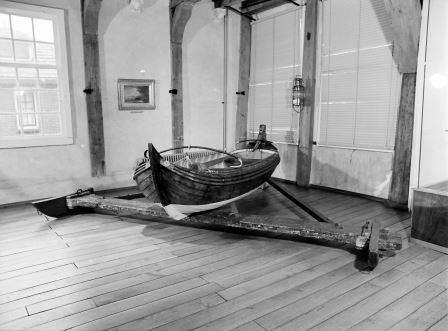Assesment of the claim
9. In a letter dated 8 January 2015 the Applicants stated that their application also relates to the wooden trunk containing a set of two cotton sails that was donated to the Museum by NN on 14 April 1997. In a letter dated 23 January 2015 the Minister agreed that the Committee’s advice also relates to this donation.
10. The Applicants have stated that they are heirs of Witmond. The Committee has taken note of the certificates of inheritance submitted by the Applicants and on the grounds of these certificates the Committee sees no reason to doubt the Applicants’ status as heirs of Witmond.
11. The Committee finds, on the basis of the information provided by the Applicants and the Minister as well as the results of the investigation the Committee has conducted, that it is highly likely that Witmond was the owner of the ice boat at the time of the asserted involuntary loss of possession. In this regard the Committee refers to the facts given under 2, 3 and The Committee furthermore finds that this loss of possession must be designated as involuntary. Several statements included in the draft overview of the facts give grounds for believing there was theft, which by definition makes the loss of possession involuntary. The precise date of this theft cannot be established with certainty, but it probably took place in 1943 or 1944. By then Witmond had very probably had to leave Monnickendam as a result of the German occupation and had probably already been murdered in Sobibor. In the Committee’s view the theft of the ice boat during this period from the possession of the Jewish Witmond committed by a member of the NSB can be attributed to circumstances directly related to the Nazi regime.
12. The Committee advises about this application according to the yardsticks of reasonableness and fairness and it therefore now weighs up the interests concerned.
The Committee takes account of the following. Witmond was the Applicants’ great uncle. Although not all those entitled to Witmond’s estate are known at this moment, the application nevertheless concerns the restitution to members of the Witmond family of an item of cultural value that was in the possession of the Witmond family in any event between 1908, and very probably earlier, and the moment of the theft. In addition the heirs of Witmond, with assistance from third parties, made several attempts after the war to broach the loss of possession with the Museum. The Committee finds on these grounds that the interest of the Applicants has great weight with regard to restitution.
Although the Minister stated that the ice boat is of special importance to the Zuiderzee Museum’s collection and to the Dutch National Art Collection, in view of the considerations discussed above, the Applicants’ interest in the return of the ice boat must be given greater weight than the interest of the Dutch State in retaining the ice boat for the Dutch National Art Collection.
